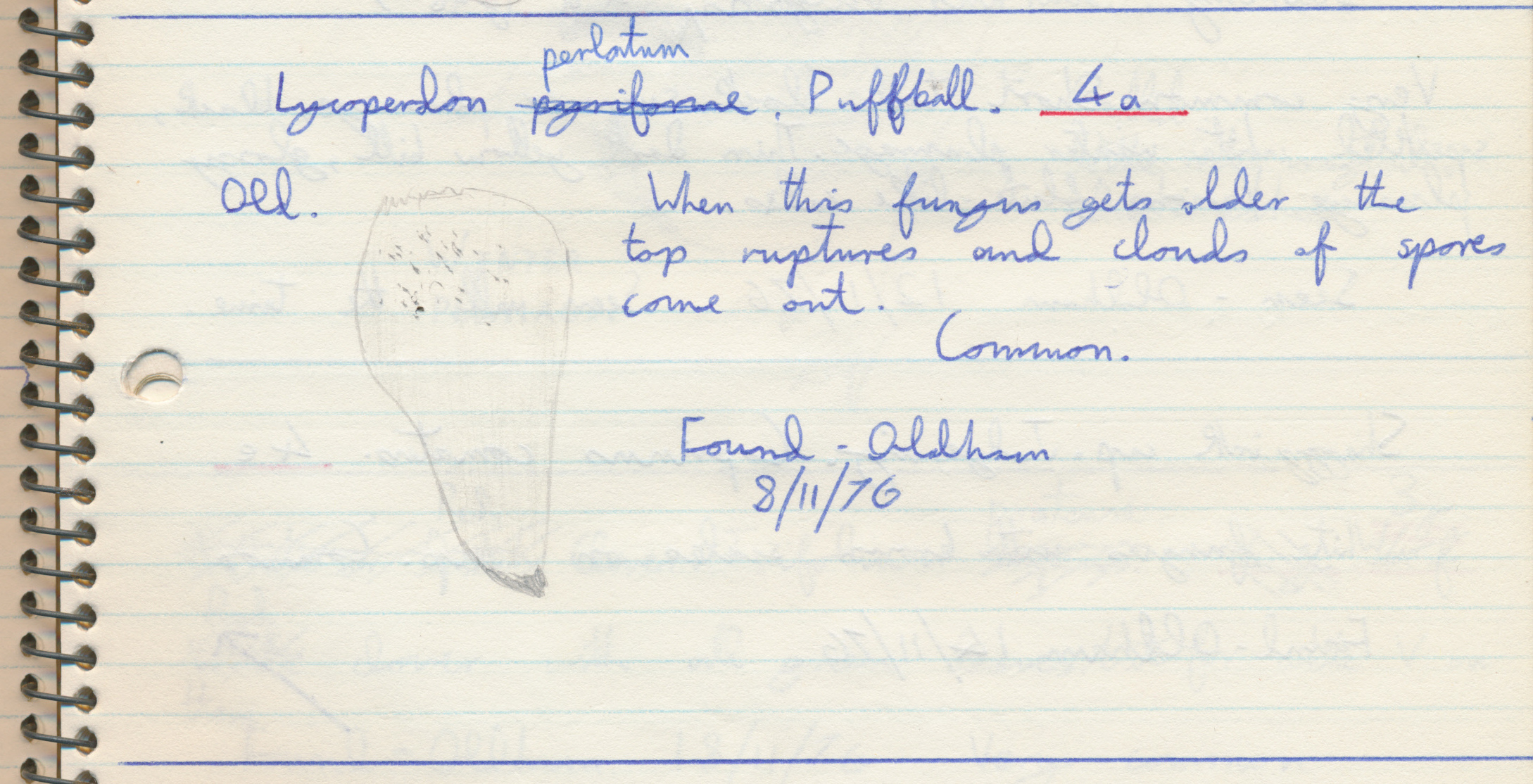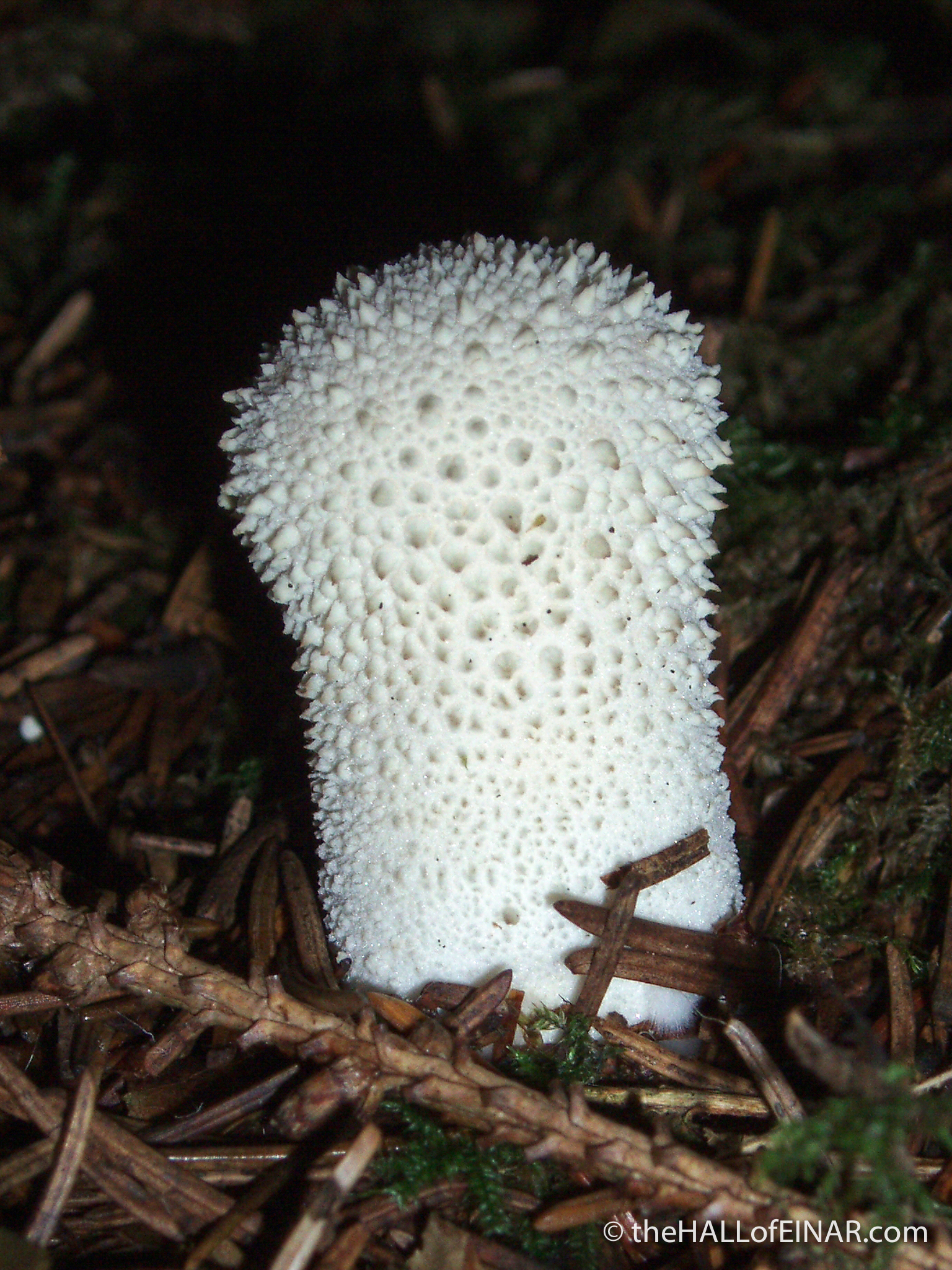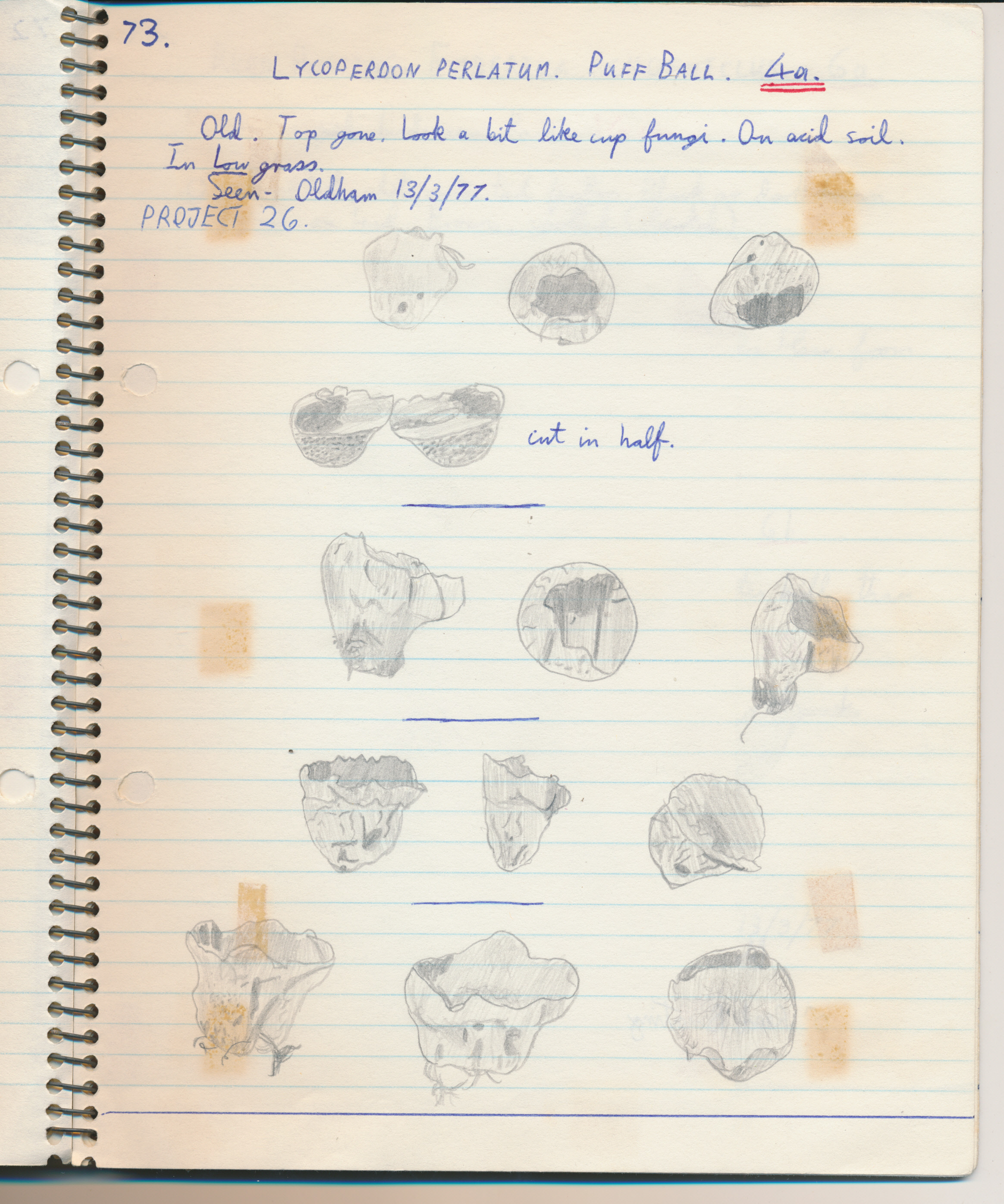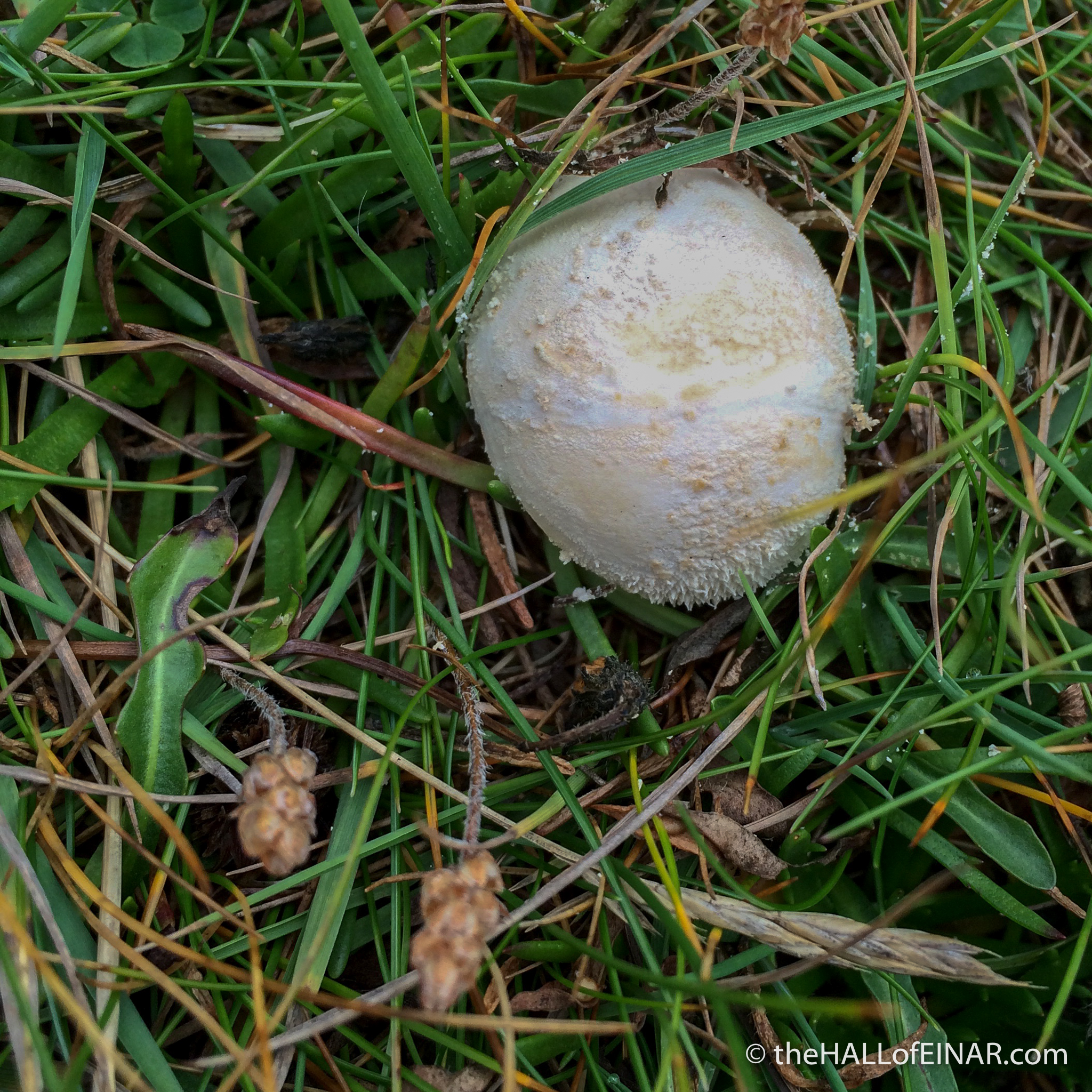Puffballs – forty years ago in my nature notebooks
When I was eleven years old I joined my local natural history and microscopical society. The next youngest member was called Darwin and he was twenty-six. The rest were retired gentlemen who wore tweed jackets, smoked briar pipes and had loft-conversions to hold their moth collections. Every Monday night in the winter I walked to the local study centre for talks, specimen identification or slide shows and even the annual hedgerow-wine tasting. In summer we went for nature walks and I tagged along with experts, breathlessly hanging on their every word as they described the nesting habits of birds, the habitat of fungi or the poisonous nature of certain berries. We had one fungus expert, an academic from Manchester University, who always helped me identify debatable specimens. One of those was a puffball I found. He explained that Lycoperdon pyriform is the Pear-Shaped Puffball, grows in groups on rotten wood, and is relatively smooth while Lycoperdon perlatum is the Devil’s Snuff-Box or Warty Puffball, is found singly, and is covered in beautiful jewel-like bumps.
Here’s my nature notebook entry from when I was twelve with the correction to the identification:
Out walking in Devon I see the perfect Devil’s Snuff-Box:
It’s beautiful.
Unfortunately they don’t stay in such perfect condition for very long because they turn into a mass of spores when ripe, leaving only dried husks behind. Here’s a page of my nature notebooks where I drew the old ripe fruiting bodies:
Walking across the fields on Westray near Rapness I come across a solitary puffball. It’s lost most of its warts, but forty years later I still know which species it is.



